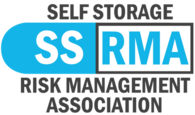Good managers are constantly looking for different ways to maximize the efficiency of their employees. Performance management techniques are a key way management can evaluate employees, check on who is performing well, who may need help and who needs terminating.
Hiring good employees and training them does not mean the job of the management team is over. Diligent managers will measure the performance of employees periodically to ensure the business is running as smoothly as possible. As a professional business consultant for over three decades, I have helped dozens of business owners by teaching them different performance management techniques to get the most out of their employees. Here are a few of the key areas a self-storage business owner can focus on when evaluating their employees.
Set goals for your employees
Within any business goals need to be set. Employees who do not understand the expectations of their job can fall short with their duties. Managers need to give their employees long-term and short-term goals and make sure that all training and meetings correlate with those goals. Periodically throughout the month, management must meet with their employees and provide feedback on performance.
Management must monitor key performance indicators (KPIs) to gauge the performance of each employee. One-way managers can do this is to have monthly or bi-weekly meetings with employees. By checking in with employees on a regular basis you can help them get better at their job and perform at the top of their potential. If you wait for yearly or bi-annual performance reviews many things can slip through the cracks and it can be too late to fix them.
During monthly or bi-weekly meetings check on different areas in which you are monitoring employee’s performance. These can be such things as tasks being met in a timely manner, customer service reviews, and payments from unit renters being paid on time and deposited correctly. There are many areas you can decide to grade your employees so see which ones are most important to your business and proceed from there.
It is also important to display a performance dashboard in an area where the entire staff can see their performance metrics as well as their fellow team members. It is the responsibility of management to keep this dashboard up to date and reviewed weekly.
Incentivize your employees
Speaking with employees weekly will provide the team with constant feedback that will help them become better employees and representatives of the business. If an employee is consistently meeting or exceeding their goals it may be time to reward them for their hard work. Incentives for employees can include bonuses, awards, raises or even vacation days. It is up to the management team to decide which is the best incentive for the employee.
Inspire your team
Management needs to constantly be motivating their employees. Managers also need to lead their teams by example. To maintain high standards in your self-storage business, managers need to inspire the employees to perform at the best of their abilities. Managers also need to hold themselves accountable and by doing so will show the employees that they take their jobs seriously which will have a positive effect on the entire team.
Create a performance-based environment
A performance-based environment will keep employees working at optimum levels because they know the better they perform in their position the more likely they will receive an incentive for their hard work.
On the performance dashboard list every team member. There needs to be categories for the duties each employee must perform during the regular shift. These can include customer satisfaction, positive reviews, and number of storage units rented. Each week update the board with a numeric system for everyone to see. By letting everyone see each other’s performance it will be a motivating tool to do better in certain areas or meet the level another employee is reaching. This is not a competition but a motivating tool to keep everyone accountable for their position within the business.
The performance of employees will help the business succeed. If the employees are meeting and exceeding their duties, then you know your customers are having a good experience with your business. Using these techniques will help management keep track of employees while also helping them become even better at their jobs.
About the Author:
John Waters is the Principal of Waters Business Consulting Group, LLC in Scottsdale, Arizona. He is an expert at helping business owners and management grow their business.





